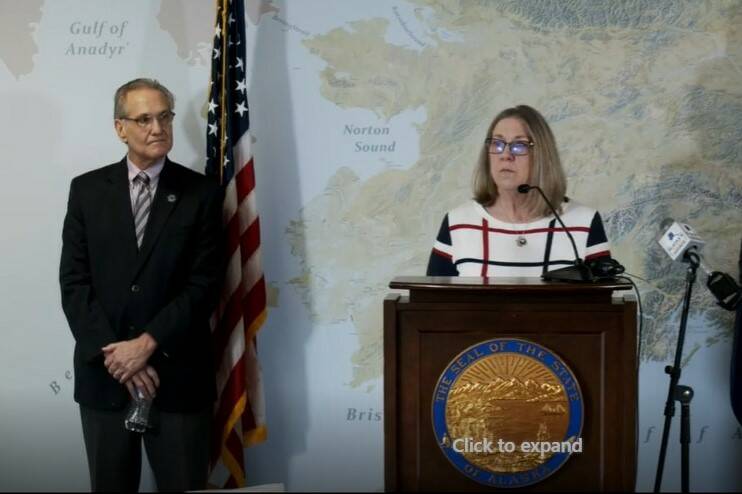Alaska voters will get their first say this June in who they want to replace U.S. Rep. Don Young in Washington. That’s per an announcement from state officials Tuesday that the special primary election for Alaska’s sole U.S. House seat will be held on June 11. The state plans to hold the special general election on Aug. 16, concurrently with the regular Alaska primary.
Alaska’s only seat in the U.S. House of Representatives became vacant on March 18, when Young died while traveling from Washington, D.C., to Alaska. Young, who had held the seat since 1973, was 88 when he died.
Under the U.S. Constitution, Gov. Mike Dunleavy said in a Tuesday press conference, no one can be appointed to fill Alaska’s U.S. House seat. Rather, a special election needs to be held, preceded by a proclamation from Dunleavy. After the proclamation is issued, Dunleavy said, the Alaska Division of Elections and the lieutenant governor will lay out the official timeline of the election.
Alaska Lt. Gov. Kevin Meyer, who oversees Alaska elections, said Tuesday the state’s plan is to close candidate filing by April 1, hold a special primary election on June 11 and hold the special general election on Aug. 16. Meyer said candidates running for a state office can also run for the vacant U.S. House seat, but would not be able to hold both positions at the same time.
“There’s not a whole lot of time here,” Meyer said.
It is the state’s goal, Meyer said, to hold the special general election on the same date as the regular Alaska primary election. The special primary election will be conducted in a vote-by-mail format because of tight deadlines and materials availability, though people will have the option to vote at regional offices on the day of the election. Like absentee ballots, vote-by-mail ballots require a witness signature.
“Under this short window, the vote-by-mail option just is pretty much the only way we can go and still have a successful primary special election,” Meyer said.
Cori Mills, the deputy attorney general for the Alaska Department of Law, said Tuesday that Alaska Statute requires the special election to be held between 60 and 90 days after the vacancy occurs. Young died March 18, meaning the special primary needs to be held before June 16, Mills said. Once the primary election is over, the corresponding special election cannot occur for 60 more days.
Appointments can be made to fill a U.S. Senate seat, but not a U.S. House seat, Mills said, necessitating the special election.
Young’s death also means the state will need to roll out new voting systems earlier than expected. The special primary and special general election will both operate under the open primary and ranked choice voting systems narrowly approved by Alaska voters in 2020, Mills said.
Under those changes, all voters will vote the same primary ballot regardless of political party. The top four vote-getters from the primary will then move on to the general election, regardless of party affiliation. If there are fewer than four candidates running in the primary, all will move to the general election.
Ranked choice voting, which will be used for the general election, allows voters to choose more than one candidate in ranked order. Voters can rank up to four candidates.
The ranked choice ballot shows a grid of bubbles, with one row for each candidate and one column for preference order. Voters fill in the bubble in the “1st Choice” column that corresponds to their first choice candidate. Voters then move to the second column and fill in the bubble that corresponds to their second choice candidate, and so on.
If a candidate receives more than 50% of the first-choice votes, that candidate would be declared the winner of the election.
If no candidate receives more than 50% of the first-choice votes, the candidate who received the least number of first-choice votes is eliminated. Then, the voters who ranked the eliminated candidate as their first choice would have their second-choice candidate votes tabulated. The process will continue until one candidate emerges with more than 50% of the votes.
Sample ranked choice ballots are available on the Alaska Division of Elections website.
Dunleavy’s full press conference can be viewed on the governor’s Facebook page.
Reach reporter Ashlyn O’Hara at ashlyn.ohara@peninsulaclarion.com.

